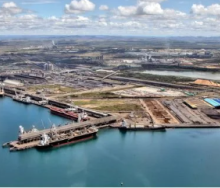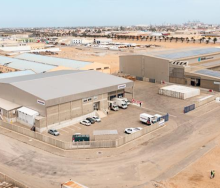Most shipping industry stakeholders anticipate that Suez Canal transits will resume before the end of 2025, with an expectation that tariffs imposed by Donald Trump will rise, according to a Drewry survey.
Osama Rabie, who chairs the Suez Canal Authority, has expressed a strong interest in seeing shipping lines return, the maritime research consultancy reports.
Speaking to journalists, he stated that traffic could begin to increase by late March, with a full recovery anticipated by mid-year, provided the Gaza ceasefire remained intact.
A significant portion of respondents (54%) share his view, believing that operations will normalise before the end of this year. The next largest group (29%) predict a resolution in 2026, while a small minority (2%) do not foresee a resolution before 2030.
This factor is critical in forecasting developments in the container shipping market. The reopening of the Suez Canal is expected to cause a swift shift in supply-demand dynamics, writes Simon Heaney, senior manager of Container Research at Drewry, in the latest update carried by STAT Media Group.
"We estimate that diversions via the Red Sea have reduced effective container shipping capacity by approximately 9%. Once this stranded capacity re-enters the market, carriers could see freight rates decline unless they successfully manage supply through other means."
This situation underscores how trade prospects are closely linked to geopolitical events, the report continues.
"The ceasefire agreement between Israel and Hamas is precarious, and Donald Trump's involvement further complicates projections. Shortly after the survey concluded, the US President urged Israel to abandon the ceasefire and 'let all hell break out' if all hostages were not released by noon on Saturday, 15 February. Soon after, Hamas announced the postponement of the next scheduled hostage release."
Given this volatile context, it is unreasonable to expect shipping companies to risk crew safety amid the threat posed by Houthi rebels, the report notes.
The survey gathered responses from over 300 participants. The majority (34%) were shippers, followed by 13.7% representing freight forwarders and 10% from port authorities and terminal operators.
Turning to Trump, it is evident that he is committed to imposing tariffs. However, his previous reversals regarding Canada and Mexico, following stock market losses, suggest he may be influenced by economic pressures. The global market remains uncertain as further tariff hikes loom.
Survey results indicate that most respondents expect additional tariffs, though opinions vary on their severity. When asked to predict the US effective tariff rate (total calculated duties divided by total customs value) by the end of the year, the most popular estimate (32%) placed it between 5% and 10%. As of September 2024, this figure stood at 2.4%.
A notable portion of respondents projected an even higher rate, with 13% expecting it to exceed 20% -- a level not seen since the Great Depression, according to the report.
When questioned about which trading partners might be targeted, the expected nations topped the list: China (85%), Mexico (76%), Canada (73%), and the European Union (60%). However, countries that might have anticipated avoiding Trump’s tariff policies, such as India (16%) and Vietnam (14%), were also considered at risk by a significant share of respondents.
Heaney said: "The multitude of external factors affecting container shipping make short-term forecasting highly uncertain. Rather than speculating, it seems more prudent to wait for events to unfold and reassess accordingly."













